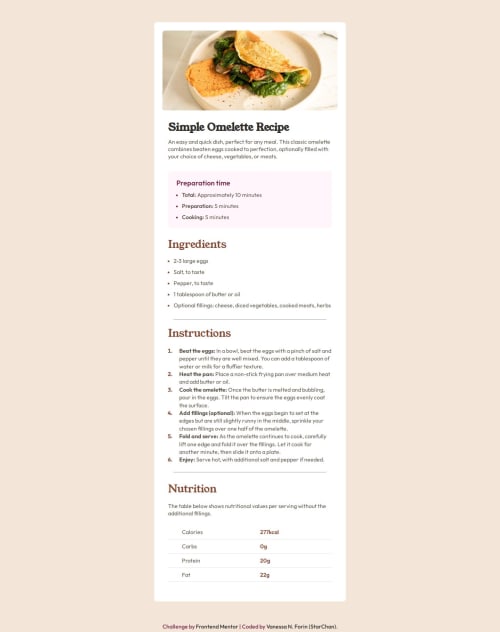Submitted almost 2 years agoA solution to the Recipe page challenge
Mobile-first Recipe Main Page
@StarChan013

Solution retrospective
Hey guys!
Thank you for being here! This is my second challenge and i'm really proud. This is my first coding a mobile-first on my own !
I studied a lot to try be more independent in projects, but i know the importance of work in a team and ask for help.
Anyways, hope you enjoy!
Waiting your feedbacks!
Code
Loading...
Please log in to post a comment
Log in with GitHubCommunity feedback
No feedback yet. Be the first to give feedback on Vanessa Navegante Forin's solution.
Join our Discord community
Join thousands of Frontend Mentor community members taking the challenges, sharing resources, helping each other, and chatting about all things front-end!
Join our Discord